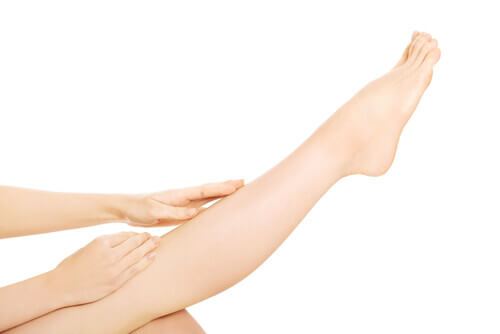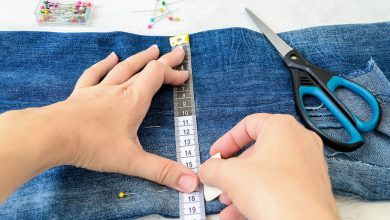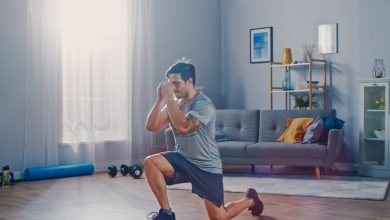How To Prevent And Treat Poor Circulation In The Legs

Both to prevent and treat poor circulation in the legs you can resort to certain measures that, in short, become beneficial lifestyle habits. Despite their simplicity, these measures have great “power” in keeping annoyances at bay or reducing their impact.
Poor circulation is a very common nuisance in the population worldwide. And while it is true that it is associated with old age, in reality, anyone, at any age, can suffer from it. In fact, many young people can experiment for a variety of circumstances.
Now, what is indisputable is the fact that poor circulation is accompanied by a series of symptoms that can decrease, to a greater or lesser extent, people’s quality of life. Therefore, it is important to know what can be done to solve it.
Symptoms of poor circulation in the legs
The lower extremities are a zone of fluid exchange. It is the final part of the blood’s journey through the veins and arteries before returning to the heart. Therefore, when the return fails, it is said that there is poor circulation in the legs. Some of the most common symptoms are:
- Tiredness.
- Swelling.
- Tingle.
- Numbness
- Feeling cold
- Varicose veins.
How to reduce poor circulation in the legs?
Changing daily habits is essential to prevent, treat or reduce this problem. It may be difficult at first, but putting in the effort yields valuable short, medium, and long-term benefits. Among the daily measures that you can apply are:
- Maintain good posture, regardless of the activity you are doing.
- If you work in an office, get up from your desk every now and then and walk around it a bit.
- You can also turn a bench or garbage can upside down to elevate your legs while in front of the computer.
- If your job consists of standing all day, try to sit for a few minutes, every half hour. In case you can’t, try taking a few steps.
- When you make long trips, in any means of transport, use the footrests and try to get up from your seat when you have the opportunity, from time to time. In this way, you will avoid poor circulation in the legs.
1. Wear special socks
Compression stockings or “rest socks” are a good option to improve blood circulation. Likewise, it is essential to avoid wearing tight clothing. Instead, it is best to wear loose clothing.
2. Get physically active
To activate circulation it is not necessary to carry out an exercise routine that is too demanding. If you take daily walks, some swimming, yoga, or bike rides, for 30 minutes, it is enough.
3. Raise your legs
In addition to the technique of putting a bench to raise the legs while we work, we can combat poor circulation in the legs simply by lifting the legs when we get home. By placing them on high for 10-15 minutes, blood return is favored. Additionally, you can:
- Support your heels on the bedside table or chair when watching television, working on the computer, or just sitting.
- Sleep with one or two cushions under your feet to make your legs higher than your heart.
However, the Spanish Association of Family and Community Medicine argues in this report that the studies in this regard are inconclusive.
4. Drink fluids

In view of the fact that one of the most annoying symptoms of poor circulation in the legs is inflammation of the legs due to fluid retention, the Spanish Heart Foundation recommends in this report that a good way to combat this problem is by ingesting enough of Water. In this way, urination is favored, which will help reduce inflammation, little by little.
5. Eat more fruits and vegetables

Containing a lot of water and nutrients, fruits and vegetables are perfect to complement a balanced diet that helps prevent fluid retention and also poor circulation in the legs.
6. Reduce salt and sugar
Too much sodium and sugar are bad for your health and can cause problems like poor circulation. And although it is not always necessary to exclude them completely in the diet, it is good to keep their consumption to a minimum, as indicated by the World Health Organization.
Salt increases blood pressure, promotes fluid retention and impairs kidney function. To replace its use in the kitchen, you can use aromatic herbs or coarse sea salt (in small quantities).
For its part, sugar alters insulin levels. Therefore, moderate your consumption. And avoid committing excesses with artificial sweeteners, as they can also be harmful, according to this study carried out by the San Sebastián University of Santiago de Chile.
7. Take a cold shower
If you suffer from poor circulation you should avoid, as far as possible, taking hot showers. Instead, try to use lukewarm water and douse yourself with cold water at the end, according to this study by the Academic Medical Center in Amsterdam. With the temperature contrast, you will help to activate the blood flow.
8. Get massages!

Enjoy a self-massage session to improve poor circulation in your legs. For example: once you finish showering, put a couple of drops of rosemary essential oil on your hands and proceed to make circular movements, from the bottom up, along your legs.
It is not necessary to apply too much pressure, but to hold the massage for a few minutes to activate circulation. At the end, raise your legs for a while and you will see how good it feels.
Remember
To treat poor circulation in the legs, it is necessary to go to the doctor and follow his instructions, in addition to the aforementioned advice. The idea is that, together, all these actions help to lead a healthier lifestyle.
Final note: the specialist in varicose veins and related problems is the phlebologist.








